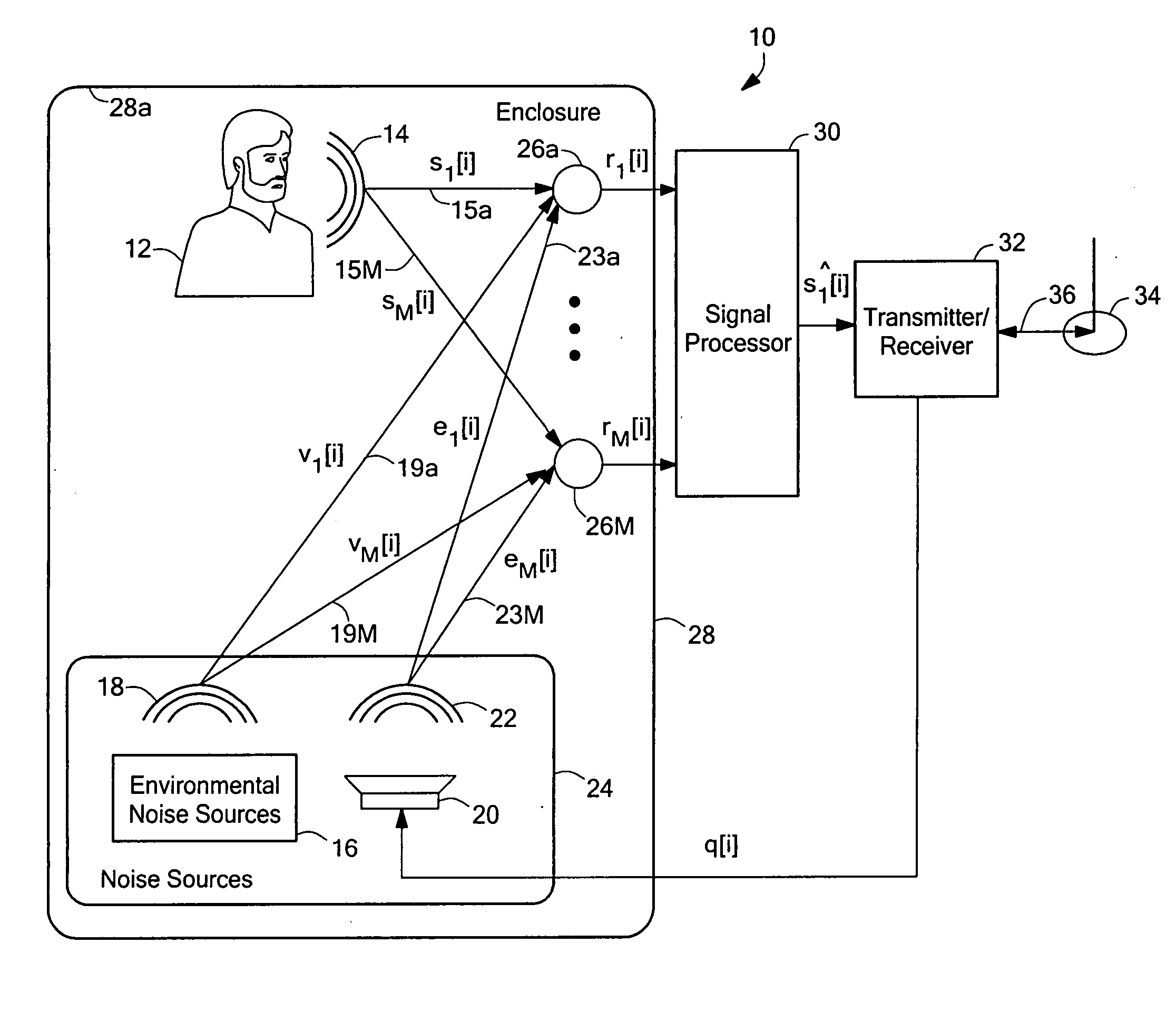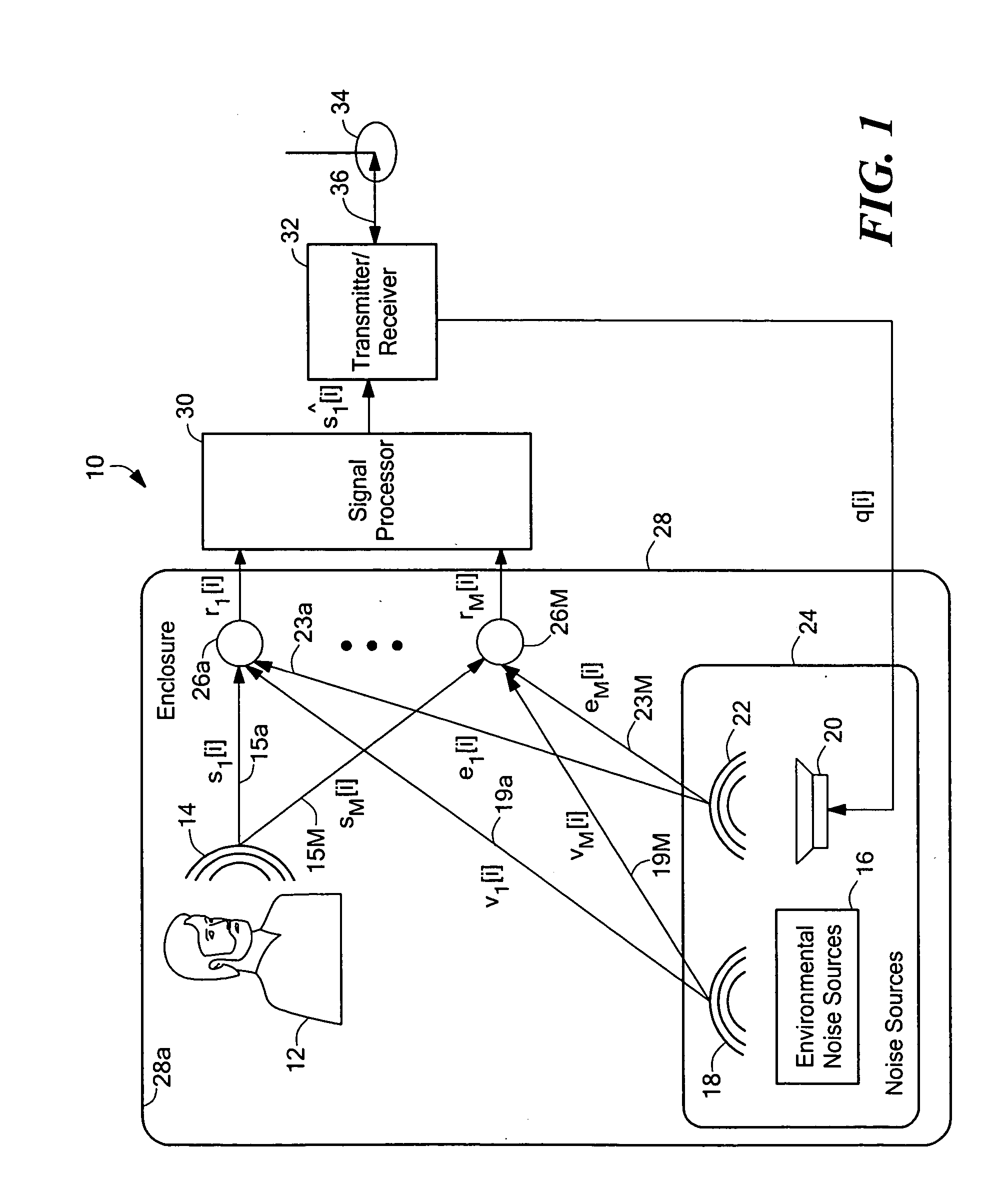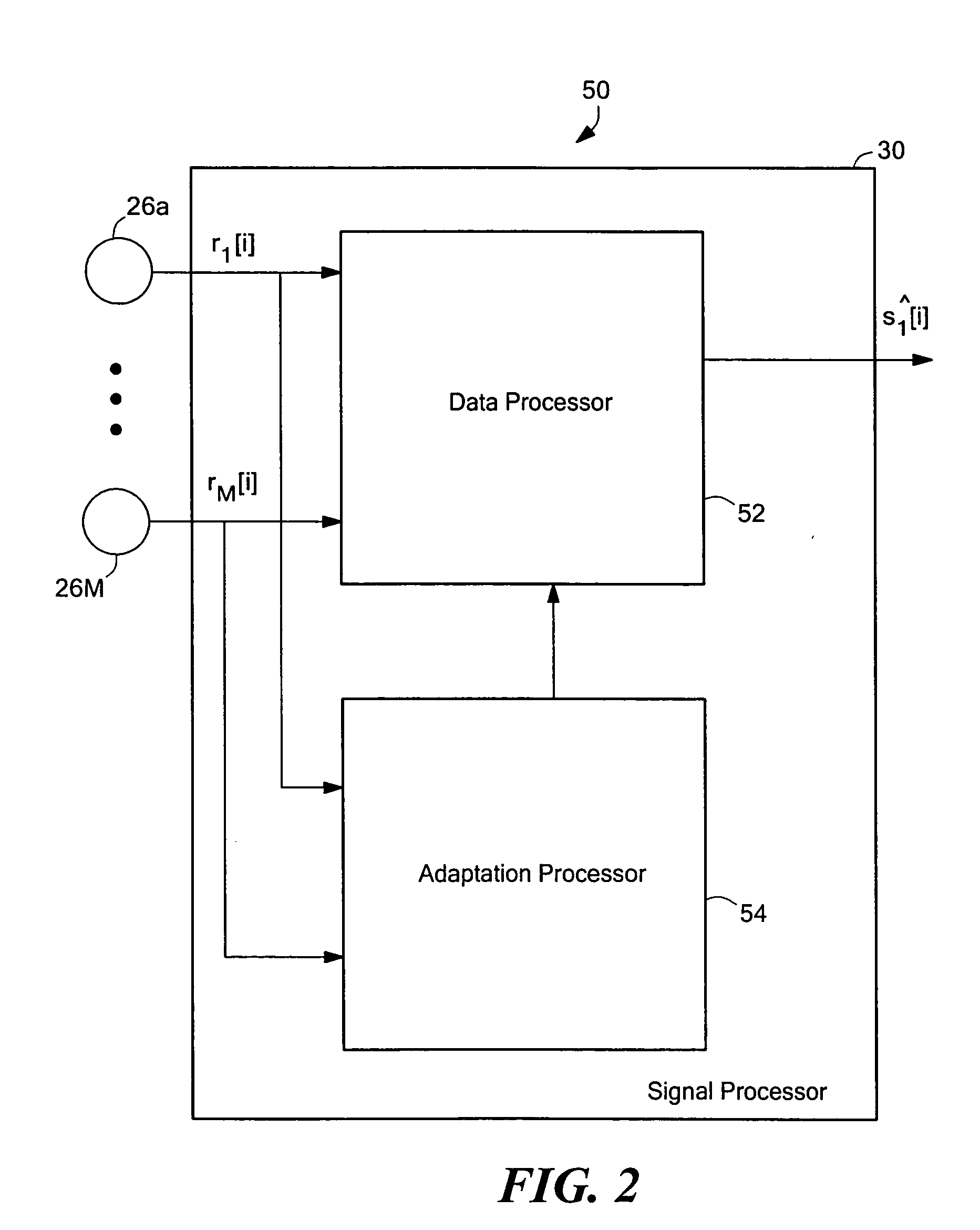Method and apparatus for noise reduction
a technology of noise reduction and communication, applied in the field of systems and methods for reducing noise in communication, can solve the problems of reduced intelligibility, reduced intelligibility of telephone calls, and full vulnerability of hands-free systems, and achieve the effect of improving speech intelligibility
- Summary
- Abstract
- Description
- Claims
- Application Information
AI Technical Summary
Benefits of technology
Problems solved by technology
Method used
Image
Examples
Embodiment Construction
[0039] Before describing the noise reduction system in accordance with the present invention, some introductory concepts and terminology are explained.
[0040] As used herein, the notation xm[i] indicates a scalar-valued sample “i” of a particular channel “m” of a time-domain signal “x”. Similarly, the notation x[i] indicates a scalar-valued sample “i” of one channel of the time-domain signal “x”. It is assumed that the signal x is band limited and sampled at a rate higher than the Nyquist rate. No distinction is made herein as to whether the sample xm[i] is an analog sample or a digital sample, as both are functionally equivalent.
[0041] As used herein, a Fourier transform, X(ω), of x[i] at frequency ω (where 0≦ω≦2π) is described by the equation:
X(ω)=Σx[i]e−jωi
[0042] As used herein, an autocorrelation, ρxx[t], of x[i] at lag t, is described by the equation:
ρxx[t]=E{x[i]x*[i+t]},
where superscript “*” indicates a complex conjugate, and E{ } denotes expected value.
[0043] As used ...
PUM
 Login to View More
Login to View More Abstract
Description
Claims
Application Information
 Login to View More
Login to View More - R&D
- Intellectual Property
- Life Sciences
- Materials
- Tech Scout
- Unparalleled Data Quality
- Higher Quality Content
- 60% Fewer Hallucinations
Browse by: Latest US Patents, China's latest patents, Technical Efficacy Thesaurus, Application Domain, Technology Topic, Popular Technical Reports.
© 2025 PatSnap. All rights reserved.Legal|Privacy policy|Modern Slavery Act Transparency Statement|Sitemap|About US| Contact US: help@patsnap.com



